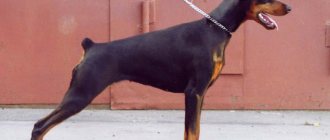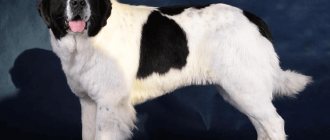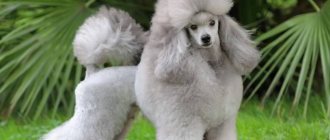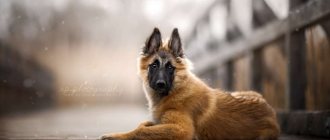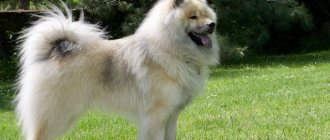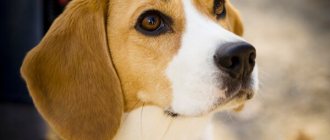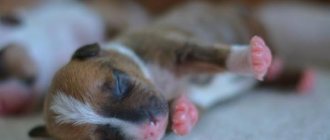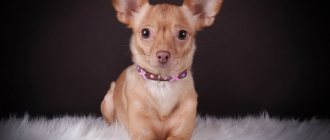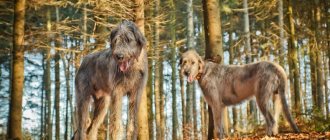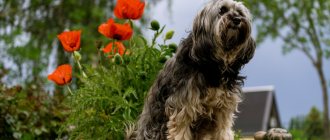All adults were once children and most dreamed of having their own four-legged friend. The more persistent ones harassed their parents with persistent requests to get a puppy and eventually got their way, but someone’s childhood desires were not destined to come true.
Now the dream of a four-legged friend has returned, but their own children already want to have a dog. What to do? Should I start it or dissuade it? How not to make a mistake when choosing a breed?
Any doubts and fears are a completely normal reaction of adequate, responsible parents who understand the importance of the upcoming step: a dog is not a toy, but a living creature with its own characteristics and needs that needs care, care and love.
Dogs for children.
Why are parents afraid to get a dog? The main doubts of mothers and fathers
Sensible parents realize that the main responsibility for the animal will fall on their shoulders. Therefore, before agreeing to add to the family, it is worth calmly explaining to your son or daughter some of the nuances associated with the appearance of a pet in the house:
- a puppy, like a small child, will leave puddles all over the apartment until it grows up, and someone will have to clean them up (this is especially important if the parents are at work all day);
- the puppy does not yet understand the word “impossible”, he will play and chew everything that gets in his way: furniture, magazines, rugs, wires, backpacks and fashionable sneakers;
- To prevent such behavior from becoming a bad habit, the dog must be educated: under no circumstances should you beat or scold, but patiently, day after day, explain to your pet what is good and what is bad;
- the dog must be fed properly, some breeds have sensitive digestion, and without receiving a balanced diet, they can often get sick;
- You need to walk your dog: in any weather, early in the morning, during the day and in the evening, regardless of your mood or desire to sleep;
- the dog must be trained in basic commands and must obey its little owner, otherwise it will simply break off the leash, and an escape may end in tragedy;
- The puppy grows and matures quickly and will very soon turn into an adult dog, and it largely depends on the child whether the pet will become a burden or a full-fledged member of the family.
Such a conversation will make sense if the child is already 8-10 years old; younger children will most likely not understand more than half or will ignore it. Experts advise children of primary school age to get a dog, and there are good reasons for this.
Dogs for children.
Large breeds
The height of four-legged animals is from 55-75 cm, weight is 26-50 kg. They need sufficient free space ; when caring for them, you need to protect their joints. We will describe the ideal dog breeds for a private home with children.
Black Russian Terrier
Calm, self-confident. It can follow its owner all day long, enjoying his company. The Terrier is careful around children . Ready to protect them if danger arises. Playful, he will be happy to keep the guys company. Cannot tolerate loneliness and needs training.
Airedale
Completely human-oriented, ready to accompany the owner in any activity, be it rest or jogging. Needs long walks and training to release energy. He behaves very reservedly with children; he is more interested in older children.
Moscow watchdog
Treats the youngest in the house very well , tolerates all their pranks and pampering. Can keep both babies and teenagers company. Needs training, has protective qualities , and is equally attached to all family members. In winter, he will gladly give everyone a sledding ride.
Bernese Mountain Dog
Friendly, treats well not only the owners, but also everyone around him. He gets along easily with the little ones, who can inadvertently offend him, as well as with teenagers. He not only plays with them, but also won’t let them offend him. for the Mountain Dog to be close to a person , but he is not inclined to prolonged physical activity.
Golden retriever
An ideal nanny, play companion. Retrievers are kind to the little ones and will never offend them. The dog is equally attached to each member of the “pack”, and is friendly towards strangers. Needs long walks.
Labrador
A pet for a large family with other pets. He extremely rarely shows aggression and will tolerate any pranks of the smallest household members. Labrador has a mane, requires many hours of daily walking, and is prone to obesity. Will be happy to join you in any active game.
Basset Hound
Discreet, very smart. He is somewhat stubborn, does not tolerate excessive severity , and loves to interact with the owner. Suitable for families with adult children. Moderately playful , prone to active, but not long walks. Loves to be close to its owners.
Giant Schnauzer
Loyal, ready to protect the owner at any moment. Wary of strangers. Loves to take care of and play with people of any age . It will perform well both in families with newborns and teenagers.
Collie
They love their owners endlessly and accompany them everywhere. They feel like nannies around children . Very playful, needs daily activity, can go jogging with family members. They are not at all characterized by aggression .
Scottish Setter
Discreet, ideal for teenagers who love outdoor recreation, hiking, cycling. He is not characterized by excessive activity, he would rather prefer leisurely walks, but will be happy to play a little with his owner.
A dog is the most faithful and reliable friend!
There are children who are naturally withdrawn and uncommunicative, and have difficulty making contact with their peers. For such a child, a dog can become the center of the universe, the only living being, besides parents, of course, to whom the child can devote all his free time and trust his most intimate thoughts.
It is the four-legged friend who will sooner or later bring the child “out into the world”: while walking with a dog, you will involuntarily have to communicate with the same “dog lovers”, and this live club of interests will not replace any online community.
At what age is it best for a child to buy a dog?
There is no unanimous opinion at what age children are ready for a dog. Dog handlers recommend focusing on the desire of the child himself and his ability to care for the pet.
- Representatives of small breeds can be purchased when the baby is 6-8 years .
- 11-12 years old can handle medium-sized dogs better .
- It is recommended to own large dogs with working characteristics only if there is the possibility of constant adult supervision.
Child and dog: who raises whom?
Dogs instill responsibility and discipline in people; it’s hard to argue with this fact. Pay attention to the child, swollen with pride, walking the dog even under the supervision of his parents: the child is overwhelmed with feelings of self-importance, because he is trusted with the dog, and for him this is important and very responsible!
The dog will grow up and will feel responsible for its owner, because it is already trusted... to walk the child without parental supervision!
The appearance of a dog in the house implies the establishment of a certain regime, because first the puppy will need to be fed by the hour, then get up early for a morning walk.
It has been noticed that children growing up in a house where there is a dog are more collected, attentive and neat, have a good sense of time and are less likely to stay late after school. Such children early learn to value loyalty and devotion, know how to forgive and practically do not cause parents problems during the difficult teenage period.
Dogs for children.
Dog and child: happy together!
If a child has no brothers and sisters, parents disappear day and night at work, and friends cannot be reached by phone, a dog will always keep company and brighten up the hours of loneliness. In this case, getting a dog is simply necessary; the child will be completely absorbed in caring for the pet and will not feel abandoned.
A dog doesn’t care what its owner looks like, how fashionably he is dressed, what his intelligence and breadth of interests are; a faithful dog, no matter what, will love the child for who he is.
Pros and cons of buying a four-legged pet
The decision to adopt a dog is a responsible and serious step. It radically changes the way of life and habits of the family. To prevent this from becoming “the biggest disappointment in life,” you should familiarize yourself in advance with the pros and cons of buying a four-legged pet.
The main positive changes will occur from the first days of the dog’s appearance:
- Increased physical activity. In the age of computers, school overloads and a saturated market for home delivery services, this is especially valuable. Walking in the fresh air twice a day, for 30-60 minutes , will undoubtedly bring tangible benefits to the physical development of the child.
- Emotional support. Dogs are grateful listeners. They do not argue, do not shout, or provoke conflicts. The child will always be able to share his problems and talk about his achievements. Their “muteness” is a great advantage over their peers, especially during puberty, when teenagers tend to give each other harsh assessments. Of course, this does not mean that the pet will take responsibility for the mental state of the children. Taking care of their health lies entirely with the parents. But the dog will be a great help and will be able to emotionally “unload” the child.
- Formation of a sense of responsibility and self-organization. The need to care for a living creature and adherence to a precise routine for caring for an animal will contribute to the development of such positive qualities as self-confidence, reliability and commitment. Adults who had a dog as a child usually have a calm and balanced character and easily overcome life's difficulties.
Negative aspects concern mainly adults and boil down to the following:
- It is impossible at first to entrust the child with full care of the pet, especially if we are talking about a puppy; parents are obliged to teach children the rules of behavior with a dog, tell them about its walking, feeding and rest regime and control these processes;
- The need to make plans for weekends and vacation trips taking into account the new family member, as well as take into account time restrictions associated with walking;
- Additional financial costs for food, vaccinations and toys for the dog.
The best dog breeds for children
Of course, there is no universal dog breed for a child. Boys are more likely to ask for a large dog: a shepherd, a Great Dane, a mastiff; girls are usually attracted to decorative breeds such as a Yorkshire terrier, Pomeranian or Chihuahua.
The main counterarguments in the case of such a choice: even an adult is not always able to cope with a well-mannered, but large dog, and parents will have to walk with a large dog for 5-6 years. Small decorative dogs of most breeds are too fragile and delicate creatures, and a child can unintentionally seriously injure the animal.
Therefore, for a child it is better to choose the golden mean: a breed of medium and small dogs with strong bones, good-natured by nature and loving children.
Golden Retriever - all the best in one dog
The ideal dog breed for a child of any age. Golden retrievers are very patient and completely devoid of aggression, extremely intelligent and obedient, easy to train, and due to their unique sensitivity, they are used in many countries as therapy dogs.
Golden retriever.
Golden retriever with a bow tie on his nose.
The Golden Retriever is a dog of medium height, with a height at the withers of 51 to 61 cm and a weight of about 30-40 kg. These dogs have thick, golden, medium-length fur that should be brushed every other day.
You need to walk your Golden Retriever more, at least 2 hours a day; these dogs are very active and resilient, and an active lifestyle will benefit both the child and his pet.
Noble, handsome dogs cannot stand loneliness; the more time the child spends playing with the dog, the happier the dog will feel. Retrievers have the rare ability to independently make the right decision in an emergency situation, so the dog can be safely left even with a small child.
See more photos of the Golden Retriever.
Sheltie (Shetland Sheepdog, Miniature Collie) is an extremely soulful dog
A sweet, kind and intelligent dog - an intellectual - is perfect for a child and a family that has no experience with dogs. Affectionate and delicate Shelties get along well with all members of the household, but recognize one owner, so it is important for the child to be able to position himself as the “leader of the pack” and in return he will receive the all-consuming love and devotion of his pet.
Sheltie.
Sheltie.
The height of an adult Sheltie is about 35-36 cm at the withers, and the weight of the largest individuals does not exceed 10 kg. Dwarf collies have luxurious long hair that requires careful care; in addition to regular brushing, it is recommended to bathe the dog more often, and shelties enjoy water treatments with delight!
These playful, active dogs love to participate in any sports games and children's fun in noisy groups. A Sheltie will never hurt a child, and the presence of strangers will be detected by barking loudly. Little shepherd dogs are generally very talkative and, depending on their mood, make a wide variety of sounds: they purr, squeal, purr, and like no one else they can smile sincerely.
See more photos of Sheltie.
Basset Hound – a loyal friend and reliable nanny
It is difficult to pass by a dog with such a memorable appearance: an elongated, squat body, crooked legs, sad eyes and long, velvety, trailing ears evoke delight and tenderness in children and adults.
Happy Basset Hound on a walk.
Basset hound: cool photo.
Basset Hounds are one of the most popular dogs in the world, the pride of English dog breeders and the favorite breed of aristocratic hunters. Born bloodhounds, Bassets are constantly on the move, sniffing at any new smells in the apartment; this dog needs long walks and active games.
A distinctive feature of the Basset is considered to be their increased attentiveness and caution with small children; a well-mannered Basset is an excellent nanny and faithful companion for a small child.
See more photos of the Basset Hound.
The pug is full of positivity and a sea of charm
These charming decorative dogs seem to be created for a quiet, measured life in the family circle, among loving owners of all ages. Pugs are distinguished by an extremely calm, balanced character, which is why representatives of the breed are often called dogs for the lazy.
Happy pug.
Black pug puppies.
Pugs adore their owners, love children madly and are always ready to please both for praise or something tasty. It is difficult to find a dog with a more docile character: the pug, together with the owner, will happily lie in bed until lunch, but will never refuse to have fun and play.
These dogs do not cause any trouble to their owners, the only thing is that they need to be fed properly and should not be overfed; pugs are prone to obesity. An open, friendly dog will be a child’s best friend, and in case of danger, it will not hesitate to defend its owner.
See more photos of the pug.
English Bulldog - strength, power and endless devotion
These dogs, with their deceptively menacing appearance and completely human eyes, are ideally suited as pets for small owners. English bulldogs are also called “couch guard” dogs: they are phlegmatic with a calm, balanced character and are great with children, and their ferocious appearance will scare off any ill-wishers.
English bulldog on a skateboard.
English bulldog muzzle.
English Bulldog puppies are very cheerful and active, and overflowing with feelings, they have the habit of jumping for joy on their owners. This behavior must be stopped from childhood, otherwise in a year the dog, weighing about 25 kg, will regularly knock over its little owner.
The English Bulldog is ideal for a calm child to take leisurely walks with. Long promenades are contraindicated for your pet; these dogs do not tolerate overwork and overheating well.
See more photos of the English bulldog.
Bichon Frize is a wonderful pet for a small child
Cheerful, loving Bichons are an excellent breed of dog for a family with growing children. Playful, cheerful dogs are tireless and energetic, they love to be the center of attention and respond to their owners with selfless devotion.
Bichon Frize.
Bichon Frize.
Outwardly, Bichons resemble a lapdog and a poodle, they are very neat and incredibly clean. Their silky, snow-white coat practically does not shed, so dogs of this breed are easily tolerated by allergy sufferers.
Despite its miniature size and weight of about 3-5 kg, behind the apparent fragility lies a strong bone, so fiddling, playing and squeezing the dog (within reasonable limits) can without fear injure the pet.
Bichons are extremely unpretentious, have good health and, with proper care, live for about 15-20 years.
See more photos of the Bichon Frize.
Jack Russell Terrier is a restless adventurer and fearless friend
For a young family with small children, where an active lifestyle is encouraged, the Jack Russell Terrier, called the “flying dog,” is ideal. Cheerful, impetuous, cheerful dogs are ready to chase a ball or a flying saucer from morning to night.
Jack Russell Terrier.
Photo: Jack Russell Terrier with a toy.
Jack Russell Terrier.
Dogs of this breed are extremely attached to children, especially if they grow up together, and playing and walking together only strengthens the friendship. Small dogs, 25-30 cm high and weighing about 7 kg, have an innate hunting instinct, must always be busy with something, willingly learn new tricks and feel comfortable where a busy family life is in full swing.
Like most terriers, the Jack Russell is a curious, courageous and independent dog; if well trained, it does not cause trouble, but jealously guards its personal territory and its owners.
See more photos of the Jack Russell Terrier.
Papillon (Continental Toy Spaniel) – a kind and affectionate “butterfly”
It is not without reason that experts recommend the Papillon as the best first pet for a child. These wonderful “butterfly” dogs are always in a good mood, smart and highly trainable, energetic, independent, love children very much and will always keep company in fun games and entertainment.
Papillon Puppy Photo
Possessing a responsive and easy-going character, Papillons do not cause any trouble in training and caring for, they understand their owners perfectly, they are sensitive to the mood and tune in to the right wave.
Papillons are distinguished by a painful attachment to their owner, and despite their miniature size, they jealously protect and experience separation very hard. These dogs love affection, respond to their owners with mutual tenderness and treat a child with pleasure and understanding who wants to stroke and cuddle their pet once again.
See more photos of the Papillon.
Small breeds
Among the small ones there are those that are ideal for living next to children . Due to the size and the possibility of injuring four-legged animals, you need to take into account that they should be owned by those over 8 years old. Choose which dog is best to buy for your child from small breeds.
Yorkshire Terrier
Sociable, very sensitive to people's moods . Ideal for apartment living as long as he has enough toys and is trained. Wherein:
- Yorkies are easily injured;
- falling from the sofa can lead to broken paws;
- You need to pay attention to brushing your teeth.
A daughter or son will have something to watch out for if parents choose a Yorkshire terrier as the best dog for children.
Spitz
A loyal four-legged dog that is suitable for living in an apartment. Spitz dogs are recognized as one of the smartest dogs. They easily adapt to the owner’s mood and are ready to play for hours. What to pay attention to:
- daily hair care - although they are cut, this can lead to alopecia - hair loss; regular brushing will replace the need to completely cut off the animal’s hair;
- teeth cleaning;
- active walks.
You can start training an animal from 5 months.
Maltese
Active, needs the company of the owner, requires attention . A true companion who loves to play. Due to its excessive attachment to people, it is suitable for unsociable children. The Maltese dog does not tolerate long separation from a person and begins to suffer from anxiety.
Pekingese
Excellent companions for a son or daughter if they are over 8 years old, but these animals do not always have the patience for the antics of younger ones. Moderately active : they can lie on the couch for half a day without requiring anyone to play with them. The Pekingese's disadvantages include stubbornness, but they are very brave animals with good hearing and exhibit protective qualities. Apartment life suits them.
Shih Tzu
They do not tolerate loneliness - they always need company. Playful, active - long walks and daily training are suitable for them. When purchasing a Shih Tzu, you need to pay a lot of attention to the condition of its coat. This is an ideal small breed for living in an apartment.
Toy poodle
A miniature friend for children in the apartment. Playful and affectionate animals. They need training because they have a huge amount of energy. Makes an ideal gaming companion. Has protective qualities. When purchasing, please note that toy poodles need to be taught to be brushed from an early age - this will greatly simplify your life in the future.
Pug
A good dog for children and apartments. The most active, energetic ones are under three years of age. They are not the type that can entertain their owners for hours; they need breaks and quiet rest on the couch. Pugs have a slightly stubborn character and become very attached to people. They require minimal grooming but shed all year round.
French Bulldog
The animal cannot stand loneliness; a day spent in an empty apartment is stressful. The dog can play for hours. Loves to nurse and protect newborns up to one year old. Features of the French:
- do not tolerate extreme cold and heat;
- need careful selection of diet due to allergies;
- snore.
French Bulldog - for active people living in an apartment.
Chinese Crested
She is not prone to dominance , so she will become a calm, obedient friend. She can play for hours, but leaving her alone with children under three years old is not worth it, since the crested ones can easily be injured. Peculiarities:
- do not shed;
- suitable for apartment living;
- cannot tolerate prolonged loneliness;
- difficult to adapt to cold climates.
The Crested is a companion that needs companionship.
King Charles Spaniel
The basic rule for keeping this animal is to provide daily walks with activities . The King Charles Spaniel is very patient, so it is adopted with newborns. He quickly becomes attached to his owners, loves to be the center of attention , but loneliness is stressful for him.
Dog breeds that are strictly unsuitable for children
Most service dog breeds were created for the purpose of protection and protection; hunting dogs were bred to bait other animals, not to mention fighting breeds, in which aggression is inherent at the genetic level.
Bringing such a dog into a family with children means taking on a huge responsibility for raising the dog, and training the dog should only be trusted to an experienced instructor. Therefore, in order to avoid possible problems, it is better not to consider some dog breeds as a pet for a child at all.
American Pit Bull Terrier (Pitbull)
A strong, powerful, serious dog, in whose genes there is a need to kill. At the end of the last century, the breed gained notoriety as the most dangerous and unpredictable dog in the world, so introducing a pit bull into a family where children are growing up is an extremely reckless step.
Rottweiler
Despite the good reputation of Rottweilers with children, getting a dog of this breed for a child is not recommended for a number of reasons. The confident and independent character of the Rottweiler requires careful training and clear leadership from the owner.
Rottweiler.
The Rottweiler is full of self-respect and is quite tolerant of children's pranks, but it can remember an insult caused by a child or feel in a child a competitor who takes away his owner's love.
In any case, entrusting a child with walking a serious dog weighing 60 kg may not be the best decision.
See more photos of the Rottweiler.
Doberman
Strong, reliable guards and defenders, Dobermans are easily excitable, and a poorly trained dog in a bad mood stops responding to commands and displays aggression, directed primarily at the most vulnerable family members - children.
Doberman. Doberman training.
Doberman is a breed with an explosive temperament, so experienced dog breeders recommend getting such a dog for a teenager who can properly raise his pet.
See more photos of the Doberman.
Chow chow
One of the most “adult” dog breeds: due to their independence and superiority, chow chows are indifferent to children and although they will tolerate violent manifestations of love, they will give a worthy rebuff to any actions of a child that they consider bullying.
Chow-chow.
Chow chow with a puppy.
Chow-chows are contented and stubborn, they think for a long time before following commands, and their lifestyle is silent contemplation, so it will be quite difficult for a child and a chow to find mutual understanding.
See more photos of Chow Chow.
Caucasian Shepherd Dog
Prone to dominance, Caucasians unquestioningly obey their master and are tolerant of his children. But leaving a child or a noisy group of children alone with a dog is extremely imprudent: a Caucasian may regard squealing, screaming and fussing as danger, after which an immediate reaction will follow. Even the growling of such a dog can cause serious stress in a child.
Photo of a Caucasian Shepherd. Caucasian Shepherd Dog.
See more photos of the Caucasian Shepherd.
There are no bad dog breeds; there are irresponsible owners who let their dog’s upbringing take its course. Any dog, especially one adopted into a family with children, must be properly brought up, and the child must be properly prepared for the appearance of a pet.
In this case, the dog will become a full member of the family and will bring only joy, happiness and a sea of positive emotions to the little owner and his parents.
Medium breeds
Their height reaches 40-55 cm at the withers, weight – 11-25 kg. Decide which breed of dog to choose for your child from the average pets. The photo shows how sweet and kind they are.
Russian Spaniel
Tireless play partner. It has so much energy that the most active person would sooner get tired than a four-legged friend. It is important for him to be trained, taught, and not just given attention during games. Very attached to the owner . The Russian Spaniel has well-developed intuition and protective qualities; it will immediately recognize a person with bad intentions and will protect its owner.
Shetland Sheepdog, Sheltie
He loves to be the center of attention. He treats the little ones carefully, feels like their guardian, nanny. When a stranger approaches, it will bark loudly to notify its owners of possible danger. The Sheltie can play for hours. Feels great in a large family . Suitable for living in houses with private territory, large apartments.
Beagle
Active, open, love games. They are not used to dominating their owner; they often choose the youngest in the house as their leader . Beagles need systematic training and walks in the fresh air. They are perfect for runners; they will go for runs with them over any distance.
Siberian Husky
They do not tolerate living within four walls well; they need space and regular activities . They will be happy to carry you in a sled in winter. They need training and long walks in nature. Not suitable for homebodies.
Huskies are friendly, not guard dogs. They are happy with any person.
Miniature Schnauzer
Active with a reserved disposition. Although he is playful, he is not intrusive . If the owner does not have time to play, the miniature will not pester, but will settle down next to him or will follow him. They enjoy playing with everyone, regardless of age, and at the same time protect them. They are suspicious of strangers and, if necessary, will rush to protect the owner and household members.
English bulldog
Friendly, strongly attached to the owner, difficult to tolerate long separations. The bulldog gets along with kids , is ready to play and play pranks with them, but not for long. His energy reserve will last for an hour and a half , and then he needs rest. Therefore, dog experts recommend getting English bulldogs for a daughter or son who is already 10-12 years old.
Welsh Corgi
Some of the most life-loving, friendly pets. They are equally attached to all family members. They love to play, are ready for many hours of active games, but at the same time they are able to lie at the feet of the owner for hours while he works or studies. Welsh Corgis are very careful with their little ones and tolerate their pranks without any aggression.
They practically do not bark, but they like to howl.
Border Collie
Needs regular training and is very active. If she is not given proper attention, due to excess energy she can go crazy: constantly run around the house, ram walls. Enjoy spending hours outside. It should not be started for children who are too young. The ideal age of the owner is 10-12 years. A person should pay attention to the border collie every day: train it, care for its coat, and walk it for 1-2 hours.
Basenji
Playful, strongly attached to the owner. It is better to take them with you on trips than to leave them in pet hotels, as they get very stressed. Ideal for children over 10 years old. They do not have enough patience for the pranks of too young household members . They love active games. Dog handlers say that representatives of this breed have a cat-like disposition, they are willful, and do not always easily agree to training.
Staffordshire Bull Terrier
In England, these pets are called nannies because they love to take care of babies . They can even rock a newborn and get angry with parents if the baby cries. This is a guard dog . If you want your son or daughter to become its owner, it is better that they are old enough to carry out thoughtful training.
